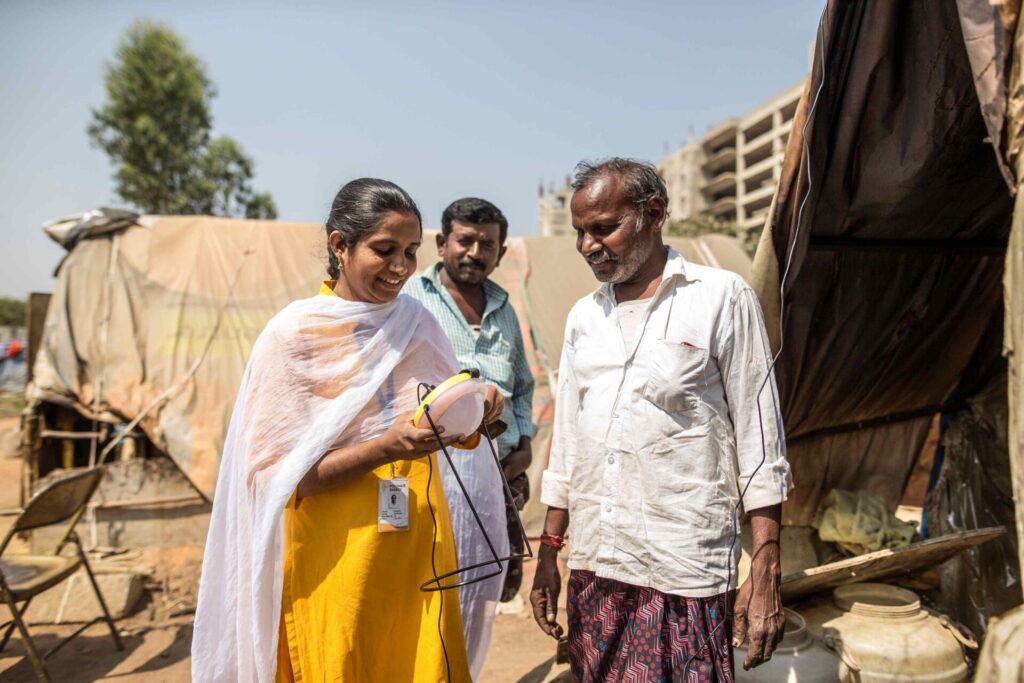Top three benefits:
- Reduce the affordability gap for customers who do not have the funds to make a downpayment or commit to a PAYGo plan.
- Add a competitive advantage and engage a customer segment that is largely underserved.
- Increase the likelihood of products having extended lifespans and being collected and recycled, as the manufacturer remains responsible.
Top three challenges:
- Income from rental services might be more volatile.
- Products can go missing and or get damaged because customers could be less careful if they don’t own the products.
- As new and better products become available, the distributor or operator that owns older versions is at risk of leasing obsolete technical equipment.

Photo credit: Pollinate Group
Trailblazers:
- In 2021, SolarAid (GDC member) piloted a rural utility extension model that enabled thousands of customers living in (extreme) poverty to access solar home systems while only paying for the electricity they use.
- Alongside leasing arrangements for solar home systems (SHS) with households, Moon (GDC member) is able to offer a unique energy-as-a-service model that reduces the overall costs for end-users in Togo.
- Aptech Africa offers farmers to use solar irrigation pumps as a prepaid service with a fee per litre that includes lifetime maintenance and irrigation training (read more here). Similarly, Claro Energy offers a pay-per-use solar irrigation service that is made available on-demand to small and marginal farmers in India (read more here).
- WidEnergy (GDC member) received an IAP fund to pilot the sales of utility-type subscriptions for low-income households to enjoy drinking water, clean energy, and connectivity through rural hubs that are operated by women.
- Surechill launched a rental model for their fridges, allowing customers such as small retailers to pay per unit of cooling they consume.
- Let us know who else should be on this list
Resources:
- Efficiency for Access’ case studies consider service business models that address affordability.
- HBR’s article on circular business models.
- SITRA and Demos Helsinki share findings on business opportunities for rethinking product ownership.
